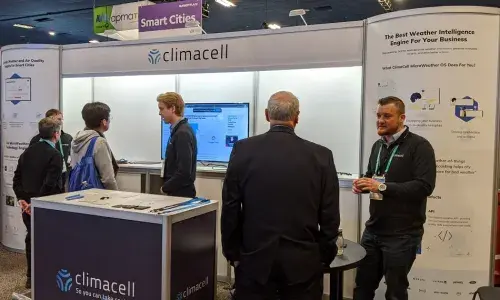
Here’s why working with a utility is a smart move for your smart enterprise
I recently became interested in a new company called Sitetracker that offers software as a service (SaaS) to help organizations manage how they operate high-volume, complex, distributed projects.
I could see how its SaaS could improve the way our company works. Project managers often need to rely on old-school legacy software that requires them to create separate spreadsheets for managing deployment and entering accounting data manually.
But Sitetracker’s SaaS could help us speed up our labor-intensive manual workflows, eliminating the typical hodgepodge of email, paper forms, spreadsheets and phone calls. When we’re more efficient, we can collaborate better and work with greater satisfaction. And that can save on costs for both companies and customers.
Sitetracker is National Grid Partners’ first smart enterprise investment in SaaS. Not only do we use the software, we also fund it with venture capital—and we provide guidance on how to navigate and work within our complex sector, to make sure it succeeds.
Is your business a smart enterprise?
This is a pretty exciting time for an enterprise I.T. investor like me. I’ve worked in technology investing for 20 years, and it’s only now that smart enterprise has really taken off.
What do I mean by “smart enterprise”? I define that as any business that’s introducing modern solutions to improve how it operates and collaborates, how it manages customers, how mobile its workforce is, and how reliable and secure it is. Among the aspects of enterprise technology I consider most important are SaaS and cloud technology, cybersecurity, and Internet of Things.
Today’s smart enterprise represents 20 years of technological investment and improvement, as networking and wireless infrastructure have increased speed and reliability, standards for chips and operating systems have emerged from disparate options, and the costs of cloud tools and storage have plummeted.
Enterprise wi-fi used to be a rarity. Now it’s the rule, not the exception. Artificial intelligence and machine learning are embedded in the information technology we use every day, improving their own performance. And SaaS and cloud infrastructure have succeeded client servers and mainframes. Smart enterprise has gone fully mainstream.
And smart enterprise has just begun hitting its stride within the past five years, as the data-analytics revolution has helped make the customer experience far better.
I don’t determine what makes a smart enterprise smart. Our customers do that, and so do yours.
Now that customers have experienced clean, elegant, mobile-oriented user interfaces, they expect that experience whenever they interact with an enterprise. If your customers can log in and self-serve, that’s a win for both sides.
Why should you talk to a utility company about capital?
As with any of my colleagues in venture capital, I view it as my responsibility to evaluate an enterprise’s fundamentals: its management team, market size and financial viability. But I also look at a company’s potential to help modernize us as a company and utilities as a sector.
Or I should say, the energy sector and beyond. Because one critical factor to me is whether an enterprise plans to work strictly with energy companies and markets or verticals—or whether it can see its own potential beyond those limits.
That’s key, because these markets and verticals take a long time to penetrate. I see vastly more investment potential in companies like Sitetracker, which also has clear applications for the telecom and technology sectors.
Every enterprise is at its own stage of modernization. Tech companies have taken smart enterprise further than industrial companies, or companies in regulated industries like ours. My mission is to help National Grid find partner with companies that can help us modernize while our power helps them break into the utilities sector.
I especially love working with companies whose applications have uses beyond one division. Word gets around: other divisions in our company now plan to use Sitetracker’s SaaS differently from the first.
I expect that to keep happening with this smart enterprise across National Grid. Maybe that will happen with your innovative enterprise ideas and applications. Nothing makes me happier than when both partners in a working relationship can help each other take bold steps into the future.
Andre Turenne is a Director at National Grid Partners.


